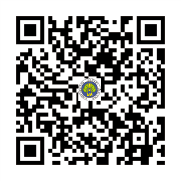Pemetaan batuan penyusun candi di bawah permukaan berdasarkan metode geomagnetik studi kasus: cagar budaya candi Songgiriti desa Songgokerto kecamatan Batu kota Batu
DOI:
https://doi.org/10.17977/um067v2i1p11-18Keywords:
Geomagnetic Methods, Magnetometer, Mapping, Magnetic SusceptibilityAbstract
The geomagnetic method is often used in petroleum, geothermal and mineral exploration and can be applied to searching prospect archaeological objects (Siahaan, 2009). Several studies has been used the geomagnetic method to seek for archaeological objects by Ariani (2012) in Losari Temples and Sismanto et al (1997) in Kedulan Temple. In Batu City there is one of the cultural heritage that have not been intact called Songgoriti Temple. So, in this research we expected the existence of temple’s rocks using geomagnetic method. The de sign of the research using geomagnetic methods begins with the study of litera ture. This research was conducted with two methods there is calculating the val ue of the magnetic susceptibility of samples Temple’s rock using Bartington Susceptibility Meter MS2B and retrieving data field using the Proton magneto meter type ENVI SCINTREX. In the end of this research, we accepted the re sults of the two methods were compared to find out the site rock of temple. In magnetometer data analysis, data is processed using Magpick software, surfer 9.0 software and Mag2dc software. The results of the research show that a local magnetic field patterns of rocks in the area of cultural heritage Songgoriti Tem ple is divided into three parts namely high local magnetic field (yellow to red), the moderate local magnetic field (green to yellow) and low local magnetic field (blue). Furthermore based on five cross-sectional modeling using Mag2dc, we obtained the prediction the site of temple Songgoriti that is the sample number 1 found on the 2 position i.e at coordinates 49S 664547.5m 9130115m and coor dinate 49S 664585m 9130105m; sample number 3 found on the 2 position i.e at coordinates 49S 664583m 9130100m and coordinate 49S 664585m 9130100m; sample number 4 found on the 2 position i.e. at coordinates 49S 664577.5m 9130115m and coordinate 49S 664577.5m 9130110m; sample number 5 found on the 3 position i.e. at coordinates 49S 664566m 9130095m, coordinates 49S 664573m 9130095m and coordinate 49S 664582.5 m 9130095m; sample num ber 6 is found in 5 position i.e. at coordinates 49S 664545.5 m 9130110m, coordinates 49S 664550m 9130110m, coordinates 49S 664546m 9130105m, coordinates 49S 664565m 9130105m and coordinates 49S 664562.5 m 9130100m. For sample number 2 that is not found at all in the five models cross section. This may be caused by the value of the magnetic susceptibility sample number 2 is minor when compared to another samples that is 0.86 x 10-6 m3/kg
References
ABA, M. U. N., Yulianto, T., & Harmoko, U. (2014). Interpretasi bawah permukaan daerah sumber air panas diwak-derekan berdasarkan data magnetik. Youngster Physics Journal, 3(2), 129-134.
Anonim (2014, Nopember 25). Magnetik paramagnetik-feromagnetik bab-ii-asmin. https://www.academia.edu/8460392/
Arafah dan Siswanto. (2006). Keberadaan situs pagar dan dinding parit purba pada situs candi plaosan lor di Desa Bugisan, Prambanan, Klaten, Jawa Tengah dengan metode magnetik. Proceeding The 31st Annual Scientific Meeting (PIT) HAGI Semarang: Himpunan Ahli Geofisika Indonesia
Ariani, N. D. (2012). Pemetaan sebaran batuan penyusun pagar candi di situs candi losari dusun losari desa salam Kecamatan Salam Kabupaten magelang berdasarkan metode geomagnetik. http://digilib.uin-suka.ac.id/8114
Dearing, J. (1999). Environmental magnetic susceptibility, using the bartington MS2 system. British Library Cataloguing in Publication Data, ISBN 0 9523409 0 9.
Eksanti, S. D. (2013). Penerapan metode geomagnet untuk mengetahui nilai suseptibilitas magnetik lapisan tanah dibandingkan dengan pengukuran suseptibilitas magnetik secara langsung: studi kasus lapisan tanah di Desa Pandensari Pujon, Malang (Doctoral dissertation, Universitas Negeri Malang).
Ismail. (2010). Metode geomagnetik. Universitas Sebelas Maret: Surakarta. http://id.scribd.com/doc/40765412/metode-geomagnetik
Rahayu, A. (2012). Status keberlanjutan kota batu sebagai kawasan agropolitan (Doctoral dissertation, Program Magister Ilmu Lingkungan Undip).
Romdhon, S. (2013). Pemetaan potensi geothermal di daerah candi Songgoriti dengan menggunakan metode geomagnet (Doctoral dissertation, Universitas Negeri Malang).
Rosanti, D. F. (2012). Korelasi antara suseptibilitas magnetik dengan unsur logam berat pada sekuensi tanah di Pujon, Malang. Malang: Program Studi Fisika, Fakultas Matematika dan Ilmu Pengetahuan Alam, Universitas Negeri Malang.
Santoso, J. (2002). Pengantar teknik geofisika. Bandung: ITB. Siahaan, B. U. B. 2009. Penentuan. Struktur pada zona hydrokarbon daerah “X” menggunakan metode magnetik. Skripsi: Universitas Indonesia.
Suparwoto, M. (1997). Pendugaan keberadaan batu candi di situs purbakala candi kedulan dari pola anomali medan magnet total. Manusia Dan Lingkungan, 4(1997).
Suwardono. (2014, September 24). Korelasi candi songgoriti dengan prasasti sangguran. http://www.wacananusantara.org/korelasi - candi - songgoriti - dengan - prasasti - sangguran – tahun -928-m
Syirojudin, M. (2010). Penentuan karakteristik sesar cimandiri segmen pelabuhan rtau-citarik dengan metode magnet bumi. Skripsi: Universitas islam negeri Syarif Hidayatullah Jakarta.
Telford, W.M., Geldart, L.P., dan Sheriff, R.E. (1990). Applied geophysics. Second edition. London: Cambridge University Press.



1.png)
4.png)









